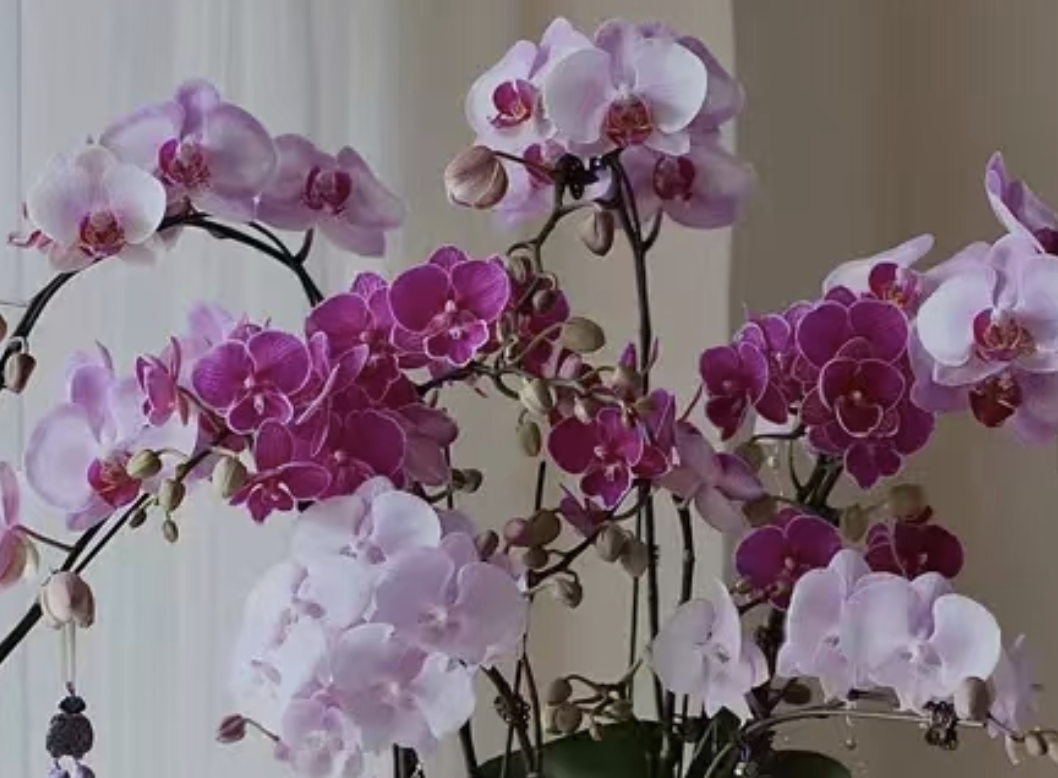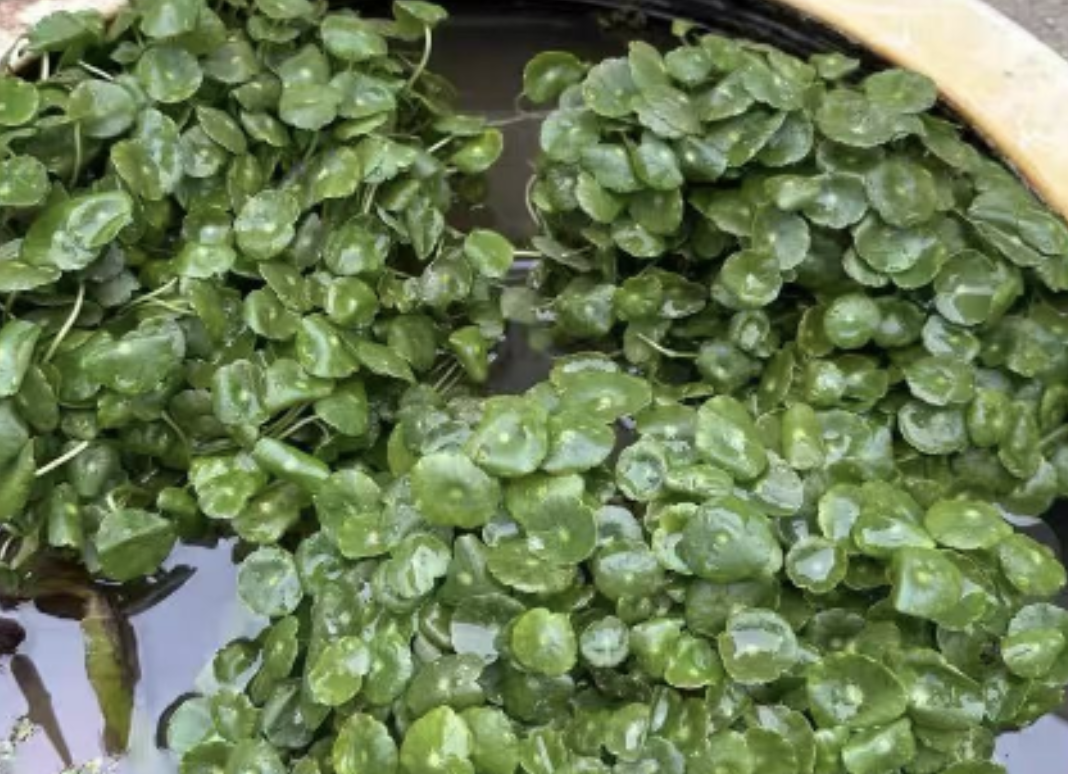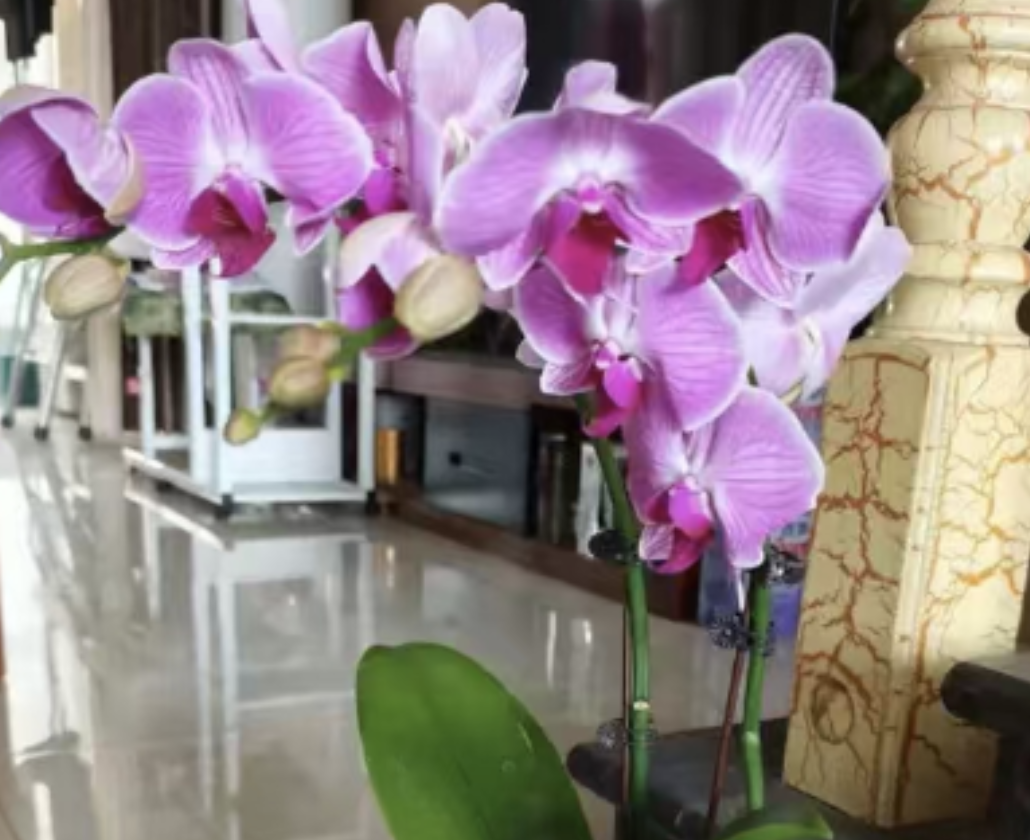In the vast field of plant propagation, seed propagation, as the most traditional and natural method, has long occupied a dominant position. However, with the continuous progress of horticultural technology, the propagation method of cutting flower stalks has gradually emerged.
Cutting flower stalk propagation, as the name suggests, is a propagation technique in which healthy flower stalks or stem segments of plants are cut and promoted to take root and sprout under suitable environmental conditions, eventually growing into independent plants. This method is not only easy to operate but also has a high success rate, especially suitable for some plant species that are difficult to propagate by seeds or have a slow growth rate.
Steps for cutting phalaenopsis flower stalk propagation
The best time is within one week after the phalaenopsis flowers fade. At this time, the buds on the flower stalk are the most vigorous. Select a healthy plant without pests and diseases as the mother plant, and cut a flower stalk or stem segment of moderate length with several leaves from it as the propagation material. Properly trim the cut flower stalk or stem segment, remove excess leaves to reduce water evaporation, and apply growth promoters such as rooting powder at the cut.
Insert the processed flower stalk or stem segment into a moist substrate (such as a mixture of perlite, vermiculite, and peat moss), keep the substrate slightly moist, and place it in a semi-shaded and ventilated place. Water and spray regularly to keep the substrate moist, avoid direct sunlight, and gradually increase the light intensity after taking root. At the same time, pay attention to preventing and controlling pests and diseases to ensure the healthy growth of the plant.
Advantages of cutting flower stalk propagation
Compared to seed propagation, the cutting flower stalk propagation method can greatly shorten the growth cycle of new plants. Since it directly uses the nutrient reserves of the mother plant, new plants can take root and sprout in a relatively short time and quickly enter the growth period. New plants obtained through cutting flower stalk propagation can maintain the excellent characteristics of the mother plant to the greatest extent, such as flower color, shape, fragrance, etc., avoiding genetic variation problems that may occur in seed propagation. Under suitable environmental conditions, the success rate of cutting flower stalk propagation is usually high. As long as the operation is proper and appropriate propagation materials and substrates are selected, most flower stalks or stem segments can successfully take root and grow into independent plants.
The cutting flower stalk propagation method is not only suitable for a variety of flower plants but can also be used for the propagation of some herbaceous plants and shrubs. In addition, for some plant species that are difficult to propagate by seeds, the cutting flower stalk propagation method is an effective propagation means.
Comparison with seed propagation
Although seed propagation can produce a large number of offspring, it has disadvantages such as a long growth cycle and large genetic variation. In contrast, the cutting flower stalk propagation method has advantages such as fast propagation speed and high genetic stability. However, it should be noted that not all plants are suitable for using the cutting flower stalk propagation method; some plants need specific growth environments or stimulation conditions to successfully reproduce.
Comparison with tissue culture
Tissue culture technology can quickly propagate a large number of plants under sterile conditions, but its operation is complex, the cost is high, and the technical requirements are strict. In contrast, the cutting flower stalk propagation method is simpler and easier to implement and has a lower cost; however, its propagation speed still has a certain gap compared to tissue culture.
The cutting flower stalk propagation method of phalaenopsis, as an efficient and convenient plant propagation strategy, through cutting flower stalk propagation, not only can easily obtain more phalaenopsis but also can retain and inherit the beautiful characteristics of the mother plant. It has broad application prospects in the field of horticulture. By deeply understanding its specific operation steps, advantages, and comparative analysis with other propagation methods, we can better use this technology to cultivate more healthy and beautiful new plant varieties. At the same time, we should also recognize that different propagation methods have their own advantages and disadvantages; in practical applications, we should choose an appropriate propagation method according to specific circumstances to ensure the best propagation effect.
Propagation Method of Cutting Phalaenopsis Flower Stalks
Share with
Tagged in :




Leave a Reply